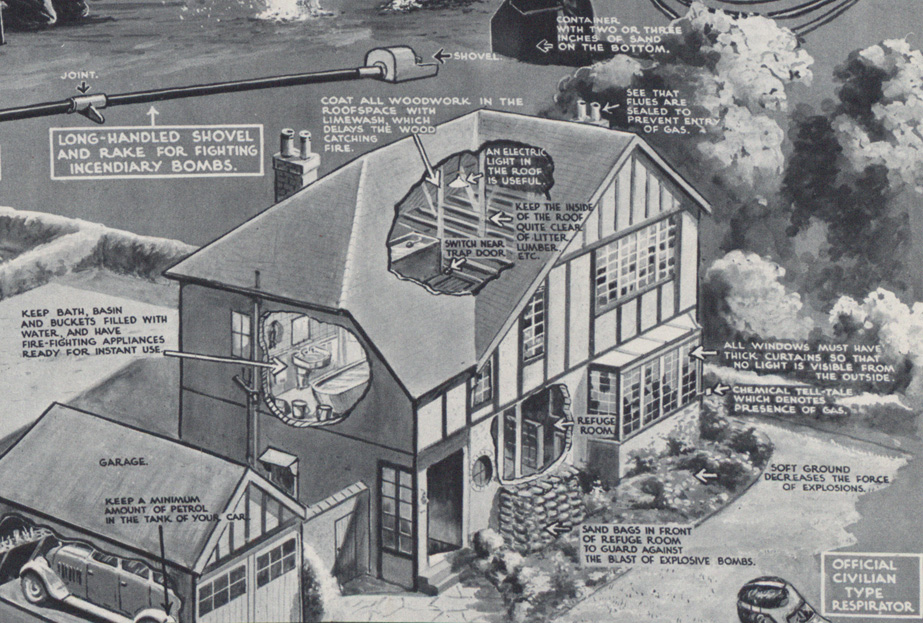
Detail from The Householder’s part in ARP [Air Raid Precautions]: Meeting Bomb and Gas Dangers from the Illustrated London News, 16 July, 1938 Catalogue ref: ZPER 34/193
Picture showing a labelled house with separate garage
[Moving clockwise from 12 o’clock to the left]
Coat all woodwork in the roof space with lime wash which delays the wood catching fire [shown with arrow]
See that flues [chimneys] are sealed to prevent entry of gas [shown with arrow]
All windows must have thick curtains so that no light is visible from the outside [shown with arrow]
Chemical tell-tale which denotes presence of gas [shown with arrow to window]
Soft ground decreases the force of explosions [a flower bed in front of house shown with arrow]
Refuse room [room in house shown with arrow]
Sand bags in front of refuse room to guard against the blast of explosive bombs [shown with arrow]
Official civilian type respirator [show with arrow to gas mask]
Container with two or three inches of sand on the bottom [shown with arrow]
Garage labelled: Keep a minimum amount of petrol in the tank of your car
Bathroom [shown with arrow]: Keep bath, basin filled with water, and have firefighting appliances ready for instant use
Long handled shovel and rake for fighting incendiary bombs [bombs which start fires] [shown with arrow]
5. Look at Sources 5 a and b. These are wartime warning posters.
- What dangers do these sources warn the public about?
- Who was the local air raid warden for Drypool Green?
- What was the air raid signal for ‘all clear’?
- In the months leading up to September 1939 many towns practised their air raid signals and taking shelter. Why do you think this was necessary?
- Read the section in Source 5a called ‘Fire Precautions’. Which parts are the public
- likely to follow?
- likely to ignore?
- Look at Source 5b. Read all the labels. How would each precaution help save lives if there was an air raid?
